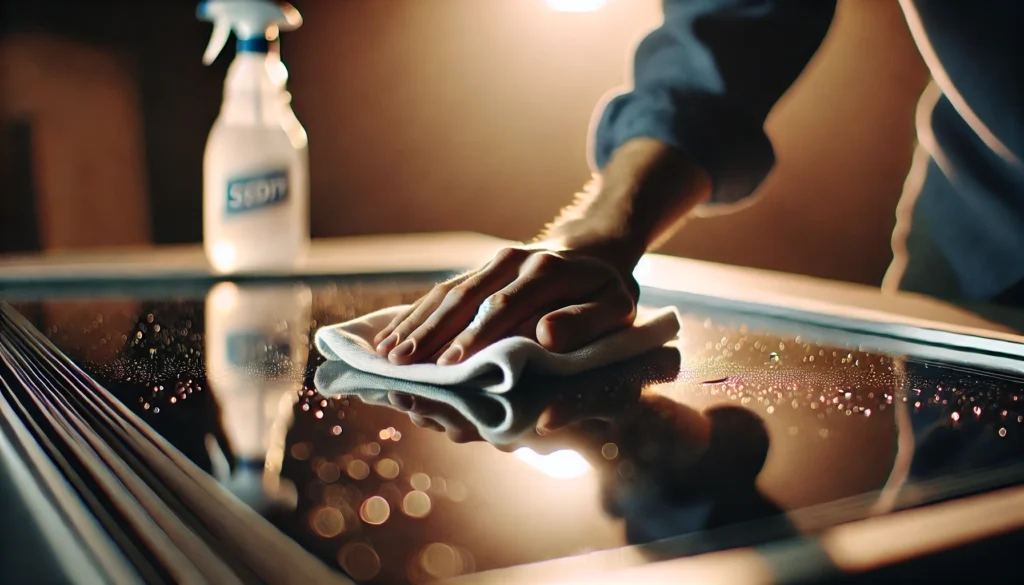Keeping Your Vinyl Sign Looking Great
How To Keep Your Vinyl Sign Looking Great
Business sign maintenance is a vital component of an overall brand management plan. Customers often form impressions of a brand long before the first person-to-person contact. A well-maintained sign reflects key attributes consumers expect from businesses they support: conscientious, supportive, resourceful, sincere, practical, capable, and customer-oriented.
Whether it’s intentional or not, think about the message sent by old, faded signs, and those with missing letters, peeling paint and low-quality lighting. Routine maintenance and timely repairs demonstrate appreciation for customers, and protect your assets by extending the life of your property signage and lowering operating costs.
Protect Your Signage Assets With Proper Care & Maintenance
Extending the life of your custom signage starts with a well-designed routine and preventative maintenance plan. Properly fabricated signs should look attractive and work 24/7 drawing in loyal and new clientele for 10 to 12 years—barring damage from direct impact or extreme weather events. Regular maintenance doesn't just freshen the appearance, it gives your team an opportunity to look for minor damage that could lead to premature failure, and costly repair or replacement.

Regularly Clean Your Sign
Dust and dirt can dull the appearance of your vinyl sign, especially for outdoor displays. A gentle clean every so often will keep it looking fresh. I recommend using a soft cloth with a mix of mild soap and water to wipe down the surface. Avoid any harsh chemicals or rough materials that could scratch or wear down the vinyl. This simple cleaning routine helps maintain your sign’s bright look without damaging it.
Maintaining Exterior Signs
Consider these do's and don'ts when designing an outdoor sign cleaning and care plan.
Do:
- Clean all exterior signs on a regular basis. Pencil in a cleaning day, and bring in extra staff if necessary to start on schedule.
- Keep signs looking their best with a quick refresher after ice storms, heavy rains, and blowing wind strong enough to drive airborne road-grime and debris into signage.
- Always turn off power to signs with electricity before cleaning
- Use a nozzle sprayer and spray at least a foot away from the sign to avoid impact damage
- Clean easily reachable surfaces by hand, using a mild liquid detergent and soft sponges or lint-free cotton cloths.
- Pay special attention to crevices and corners where dirt and debris are more likely to collect and pack.
- Rinse thoroughly.
- Wipe dry, if possible, to prevent water spots.
- Check the frame, base, sign face, letters and other components for cracks and other damage—schedule repair as soon as possible to prevent further damage.
- Restore power and make sure all lights are working, properly positioned and illuminating your message.
Don't:
- Use power washers above 200psi—high pressure may cause damage and/or premature failure.
- Use water above 180 degrees.
- Use harsh chemicals, metal cleaning tools or scrapers, paper towels, newspaper, rough brushes or other abrasive clothes. Doing so may scratch or pit sign surfaces and finishes.
Maintaining Interior Signs
Protecting your interior signage investment starts with choosing a proper location. Install signs away from direct sunlight, as harsh sunlight causes discoloration, fading, and warping. If you must install signs in areas where direct sunlight flows through windows or doors, use blinds or drapes to block or filter the light. There are many sun-filtering window treatments on the market today that block harmful UV rays, while allowing natural light transfer.
Even though interior signs are generally protected from inclement weather, they still need regular cleaning and inspection. It’s a good idea to monitor indoor signs more frequently for splatters and spills, excessive fingerprints and other hazards. Convenience stores, for example, may need to wipe down signs in proximity to soda fountains and food counters more often.
The cleaning schedule for a doctor's office with interior signs to direct patient flow will naturally be different from one designed for a high-traffic gas station. Each business should assess their customer flow and create a cleaning and inspection schedule that complements their regular activity.
Regardless of the frequency, spot clean metal or acrylic signs using a warm, mild dish soap and water solution, and soft, lint-free wipes or cloths. Then, rinse, and wipe down with a soft cloth. To avoid scratches, never use harsh chemicals, sharp objects, and abrasive fabrics. Skip commercial cleansers and glass cleaners, as these formulas may weaken sealants and damage your sign.
Maintaining LED Signs
Cleaning LED signs is very similar to cleaning other interior signs. However, you can spot clean your LED fixtures using a commercial glass cleaner, such as Windex, and a soft towel. Avoid harsh chemicals and commercial solutions containing butyl cellosolve, including Lysol and Pinesol.
Extend the life of your LED signs—and save energy costs—by powering down your signs when the business doesn't need them.
Proactive maintenance includes responsible preventative and repair policies. If you spot damage, take immediate action to repair or replace your sign.
Following these simple steps can help your vinyl sign stay looking sharp and vibrant for years to come. As experienced sign makers, we know that a little care goes a long way in making sure your sign continues to make an impact. Remember, if you ever have questions about sign maintenance, we are here to help!

